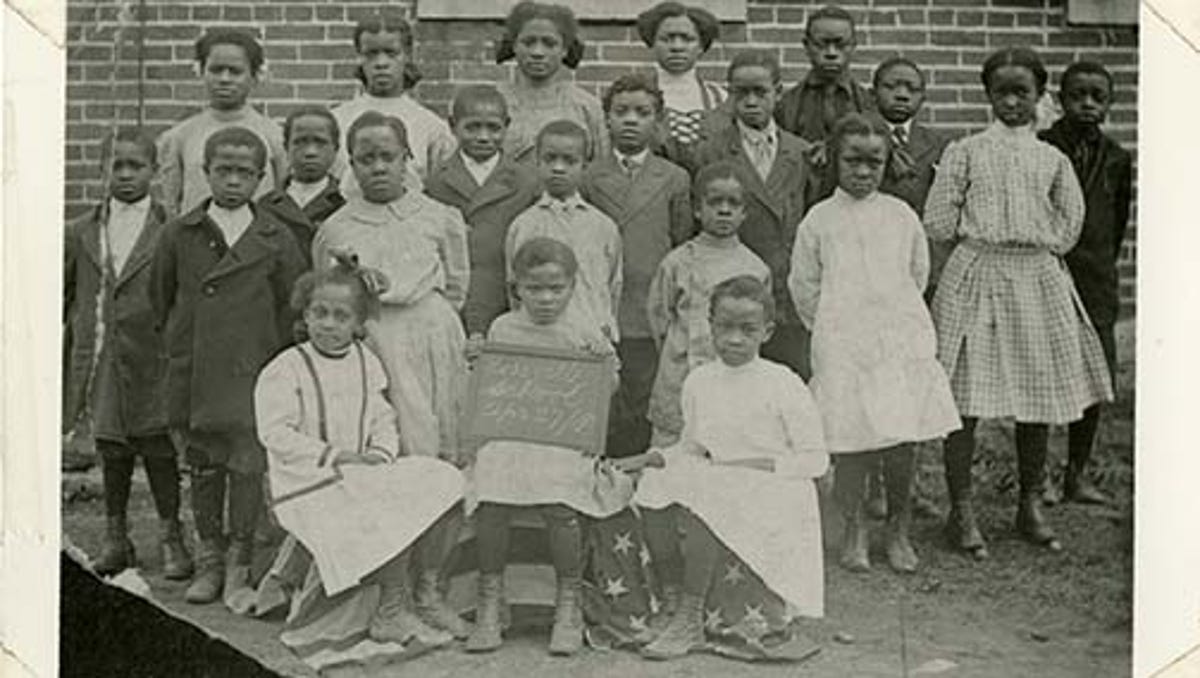Ohio
Students, professors speak against Ohio bill that would create ‘intellectual diversity’ centers

The following article was originally published in the Ohio Capital Journal and published on News5Cleveland.com under a content-sharing agreement.
University of Toledo law students and Ohio State University professors spoke out in opposition against a bill that would create new centers at both universities that would expand and affirm what sponsors deem “intellectual diversity.”
Senate Bill 117 would create the Salmon P. Chase Center for Civics, Culture, and Society at Ohio State University and the Institute of American Constitutional Thought and Leadership at the University of Toledo’s College of Law.
Eleven people submitted opponent testimony and there was one interested party for SB 117 at Wednesday’s Senate Workforce and Higher Education Committee meeting. There was little questioning from the five-person committee.
The bill was introduced by Sen. Rob McColley, R-Napoleon, and Sen. Jerry Cirino, R-Kirtland, who also introduced a massive higher education bill that would overhaul college campuses that recently passed in the Senate.
SB 117 would give UT $1 million in fiscal year 2024 and $2 million in fiscal year 2025 for the Institute, and Ohio State $5 million in fiscal years 2024 and 2025 for the Center.
$5 million during those two years could pay Ohio State’s full in-state tuition costs for 400 students each year of the biennium, said Steve Mockabee, an associate professor at the University of Cincinnati, speaking on behalf of the Ohio Conference American Association of University Professors.
“At a time when college affordability is a significant concern for Ohio families, we owe it to Ohioans to be sure that funds allocated by the legislature are being spent in ways that maximize their positive impact,” he said.
“We remain deeply concerned that attempts by the General Assembly to override the autonomy of our colleges and universities will have many unintended consequences that damage, not enhance, the climate of free inquiry on our campuses and the quality of education that is offered to our students.”
University of Toledo’s College of Law
UT Law Professor Lee Strang first got the idea for the institute in 2019 and sees this not only as a way to better train future lawyers, but also as a recruiting tool for the university.
But three UT students don’t see it that way.
Megan Anderson, a third year UT law student, said she wouldn’t have picked UT if the proposed institution was in place. She called the proposed center “a subtraction from our current law school” and said she has talked to others students who have ruled out UT for law school because of this bill.
“Why would the pure existence of this center turn off a student in the first place?” asked Cirino, one of the bill’s sponsors and chair of the Senate Workforce and Higher Education Committee.
Anderson said students go to law school to make the world a better place and “this institution is not helping with that.”
“It’s not real-world practical experience that I think a lot of students are seeking out when looking for a law school,” she said.
She said UT Law School funding has been on the decline — meaning fewer professors and less courses being offered.
“The narrowly pointed focus of SB 117 fails to address the areas of law where we face significant shortages in specialized professors, such as family law, criminal law, administrative law, and estate law,” Anderson said.
She also worries the College of Law will be forced to absorb funding for the institute once the initial money runs out.
“I think it would require resources that we just don’t have,” she said. “We are running low on classrooms. I’ve taken several classes in the auditorium because the classes are so big they don’t fit into the classrooms.”
Benjamin Noah Woods, a third year UT law student, said the institute would not prepare students for the bar exam, which students must pass in order to practice law.
“This is going to teach us indoctrination of conservative, Christian nationalist interpretations of our Constitution,” he said.
Thirty-four percent of University of Toledo students passed the bar in February and 61% passed in July.
Clifton Porter, a third year law UT law student, said SB 117 is an “unnecessary and frivolous use of state funds.”
He also criticized the language of the bill and the bill’s sponsors for not defining the term “intellectual diversity,” which is used throughout the bill.
“I find this to not only be sloppy, but incredibly dangerous,” he said.
Ohio State University
Richard Fletcher, an associate professor at Ohio State, said SB 117 is a “destructive power grab” to control what is being taught at universities and by whom.
“Here we have arrived at the endgame — universities being told what they can teach and how they should teach,” he said. “Yet it is the students who suffer when their education is gerrymandered in this way.”
The Salmon P. Chase Center would be an independent academic unit and would have a director that would report directly to the provost and university president.
Ohio State already has more than 70 centers, and Christopher Nichols, a history professor at Ohio State, said the Chase Center resembles a small department, school or college.
“What it does not look like as proposed is anything approximating a center or institute as they currently operate at OSU in the social sciences or liberal arts,” he said. “It also would not operate in keeping with how the vast majority of centers and institutes work on virtually all U.S. campuses.”

Ohio
Rite Aid to close 2 more stores in northern Ohio

CLEVELAND — Recent documents show Rite Aid plans to close two more stores in northern Ohio after closing three stores in the same region in April.
The stores include:
- 334 W. Perkins Ave. in Sandusky, Ohio
- 105 West Airport Hwy. in Swanton, Ohio
Previously, these three stores closed:
- 16207 Detroit Ave. in Lakewood, Ohio
- 2110 Wales Ave. NE in Massillon, Ohio
- 2450 S. Reynolds Rd. in Toledo, Ohio
Closing dates haven’t been disclosed.
Rite Aid filed for bankruptcy in October 2023 and has closed around 250 stores since then, according to court documents.
Earlier this year, more than 30 Rite Aid locations in Ohio were slated to close or have closed.
Ohio
Registered sex offender escapes hours after Ohio kidnapping arrest

GROVE CITY, Ohio (WCMH) – Hours after Grove City police arrested a man accused of kidnapping his ex-girlfriend Thursday morning, multiple agencies are looking for him again.
Lancaster police started looking for 38-year-old Quinntel Bagley as an escaped prisoner around 1:22 p.m. While Grove City officers were taking him from Fairfield Medical Center to a cruiser, he ran away from them and out of the parking garage into woods nearby.
Bagley then broke into a home and stole a car outside of the hospital in the 700 block of Pleasantville Road, according to Lancaster police. He was seen driving a silver or grey Hyundai Santa Fe at the intersection of Coonpath Road and Old Millersport Road. Grove City police later said they had found the car abandoned in the area of State Route 33 near the Hamilton Road exit.
Grove City police said Bagley was last seen moving on foot, trying to carjack someone around 4:45 p.m. Officers are in the area searching for him.
Ohio Department of Transportation cameras showed the car abandoned on the side of the highway, with law enforcement surrounding it around 5:30 p.m.
Lancaster police said Bagley should be considered dangerous, and if spotted the public should not approach him. Grove City police confirmed he was still at large as of 5 p.m., and asked anyone who spots him to call 911.
According to a Grove City police release, officers originally responded to reports of a missing woman around 4 a.m. The victim’s car was found abandoned at an undisclosed address.
Police suspected that the woman had been kidnapped and began searching for Bagley. Approximately three hours later, the woman was found at a Grove City gas station and Bagley was arrested a short time later.
An investigation revealed that Bagley had surprised the woman at her home, grabbed her, and forced her into his vehicle, according to Grove City police. They said Bagley faces charges of aggravated burglary and kidnapping. With his escape from the hospital and seizure of a car, he could also face two additional charges, Lancaster police said.
A registered Tier II sex offender, Bagley had served 10 years in prison after pleading guilty to kidnapping and felonious assault in 2012. Three counts of rape, two counts of felonious assault and one count of kidnapping were dropped as part of the plea agreement.
Bagley had about three of five years remaining of post-release control when he was arrested Thursday.
Ohio
Ohio Department of Agriculture sprayed for Spongy Moths

NEW MATAMORAS, Ohio (WTAP) – The Spongy Moth has, over the years, invaded different parts of Ohio, including a portion of Washington County.
According to Ohio Department of Agriculture’s Spongy Moth Program Manager Jonathan Shields, the moths can affect up to 300 different plants, with Oak trees being the main ones.
Following recent trapping of the month, it was determined that an area near New Matamoras had increased numbers, which led to it being sprayed along with other parts of the state.
Shields explains more about the spray that they use.
“The treatment that we did is called mating disruption, and the product that we use contains the pheromone that is very specific to the Spongy Moth. The males can’t really tell if they are moving toward a female moth or toward a little droplet of the product that we put out there. It makes it very difficult for them to find a mate, and the result is that the following year, we have a much lower population of Spongy Moth,” said Shields.
He went on to add that in order to help prevent the spread, you should check items like campers, sheds, and other items before you move them to a new area.
For more information on Spongy Moths you can visit Spongy Moth Program – Ohio Department of Agriculture or Slow the Spread Program.
Copyright 2024 WTAP. All rights reserved.
-

 Movie Reviews1 week ago
Movie Reviews1 week agoFilm Review: I Used To Be Funny offsets its humorously-adjacent title with a dark, heartbreaking temperament. – The AU Review
-

 World1 week ago
World1 week agoEconomy, migration: Voters' main concerns ahead of elections
-

 News1 week ago
News1 week agoWoman handcuffed in police car hit by freight train reaches $8.5M settlement
-

 Politics1 week ago
Politics1 week agoTrump campaign accelerates vetting of potential running mates
-

 Politics1 week ago
Politics1 week agoHunter Biden trial enters 3rd day with cross-examination of FBI agent
-

 Politics1 week ago
Politics1 week ago'It's absurd': Congress takes bipartisan action after Cuban officials' tour secure parts of major airport
-

 Politics1 week ago
Politics1 week agoNew York appeals court judges in Trump case routinely donated to Democrats, records show
-

 World1 week ago
World1 week agoFamine ‘likely’ already stalking northern Gaza: Report
















